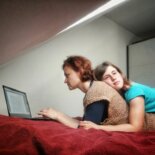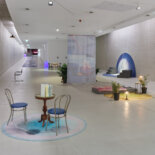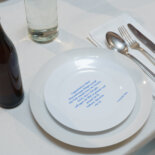Please Go Away… We’re Reading
A Practice Approach to a Taken-for-Granted Academic Craft
Fig. 1: Academic evening reading 1_Introduction The Danish verb for reading, læse, also means studying: I study anthropology = jeg læser antropologi. Similar is the Finnish “luen,” as in luen antropologiaa. On the other hand, the Finnish noun for a lecture, luento, is “a situation of reading.” The German noun for a lecture, Vorlesung is literally an “event of reading in front of someone,” a meaning we shall return to. Different languages engage with reading in different ways. Some indicate the intimate relationship between reading and study(ing), between reading and knowledge practices. Nonetheless, reading practices and the modes of reading in academia are rarely thematized within academic discourse. The practice of reading is rarely an object of epistemic exchanges in seminars, at conferences, and among colleagues. It is as if reading were such a matter of course for the professional reader, that it is not worth academic attention, much like going to the bathroom or sleeping. In the following, we present a range of perspectives on this aspect of professional reading. In “Good Readers and Good Writers,” the novelist Vladimir Nabokov claims that the text is not a finished object but is designed to be completed through reading; there is only rereading and rethinking in the process of reading. [1] Such reasoning is not alien to Science and Technology Studies (STS); as a field, STS is interested in scientific knowledge production, focusing crucially on the technical apparatus and social practices involved in the production of science. In their classic, Laboratory Life: The Social Construction of Scientific Facts, Bruno Latour and Steve Woolgar characterize laboratory practice as text production saturated with description devices. [2] The premise is that these productions are eventually read one way or another. Furthermore, reading as a diverse practice has been mythologized and its multiplicity thereby reduced. [3] For example, although Friedrich Nietzsche documented his cursory ways of reading, [4] this practice was systematically ousted from the history of Nietzsche’s reception. [5] It might be more appropriate to think of an ‘ecology of reading,’ [6] where different ways of reading cohabit. In other words, there might be a specific myth of reading, [7] but not only one mode of reading practice. In this paper, we investigate reading as an academic practice based on auto-ethnographic exchanges among ourselves. We, the authors of this _Perspective, are all academics and therefore experts in academic reading. Some of us are students,…





